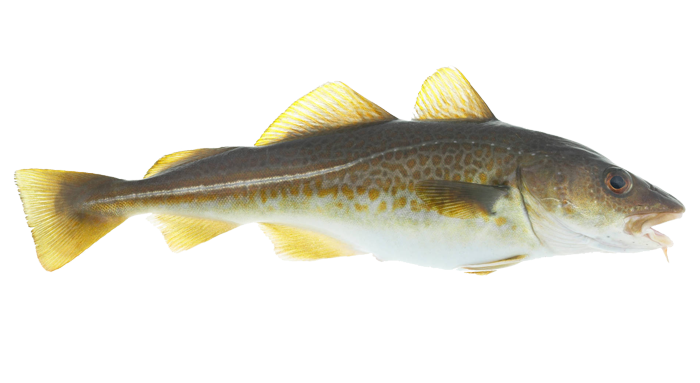

Cod has an extended, pot-bellied body of white flesh. Its upper side is a brown speckled colour while the underside has a lighter shade. Being an active hunter, the barbel on the chin of its large head helps it to find food such as other smaller fish and crustaceans.
The stationary coastal cod and the migrating Norwegian-Arctic cod.
Coastal cod lives on the seabed in shallow waters along the coast, while the Norwegian-Arctic cod – the larger part of the total Norwegian cod stock – inhabits an area in the Barents Sea until it is sexually mature. Only then it moves to the Norwegian coast. These mature cod are better known as skrei.
Read more: Fish still an important business for the local community
Each year the total quota of cod is determined by the Norwegian Ministry of Trade,
Industry and Fisheries. The quota is a result of negotiations with other coastal states and is accordingly allocated to fishermen licensed to fish for cod.
The North East Arctic stock, which is the largest cod stock in the world, is considered to be in good condition and is sustainably managed. North East Arctic cod fisheries are certified by the Marine Stewardship Council (MSC), an independent environmental body, which sets criteria for sustainable fishing requirements, and KRAV, Sweden’s best-known standard for sustainable fishing.
Read more: Our certifications
The Norwegian seafood industry is subject to stringent controls to ensure food safety.
The system consists of several bodies which jointly examine and monitor compliance with the requirements at all stages of the production chain. These bodies are the Norwegian Food Safety Authority, the Norwegian National Institute of Nutrition and Seafood Research (NIFES), the Norwegian Directorate of Fisheries and the Norwegian Ministry of Trade, Industry and Fisheries.
Skrei is also subject to a Norwegian standard (NS 9406:13) quality mark which prescribes the specific conditions under which these sexually mature spawning cod must be selected, handled and packaged.
Cod is a lean fish and is rich in:
The cod has a mild, white colour to the flesh and is suitable for many different types of accompaniments and spices. It can be strongly spiced as in a bacalao or lightly salted. Cod flakes easily and should therefore not be cut into pieces that are too small.
Read more: Baked cod - simple and delicious dinner recipes
The skrei has a great deal of muscle, good firmness and a white, delicate flesh. The byproducts from skrei such as the roe, liver, tongue and jaw make the skrei a soughtafter product.
Lerøy Seafood is a full range seafood solution provider within the retail, horeca and industry segments.
Atlantic cod (Gadus morhua)
| Energy (kJ) | 345 kJ |
| Energy (kcal) | 81 kcal |
| Fat | 1,0 g |
| -Saturated fat | 0,1 g |
| -Monounsaturated fat | 0,1 g |
| -Polyunsaturated fat | 0,3 g |
| Carbohydrates | 0 g |
| Sugar | 0 g |
| Protein | 18,1 g |
| Salt | 0,13 g |